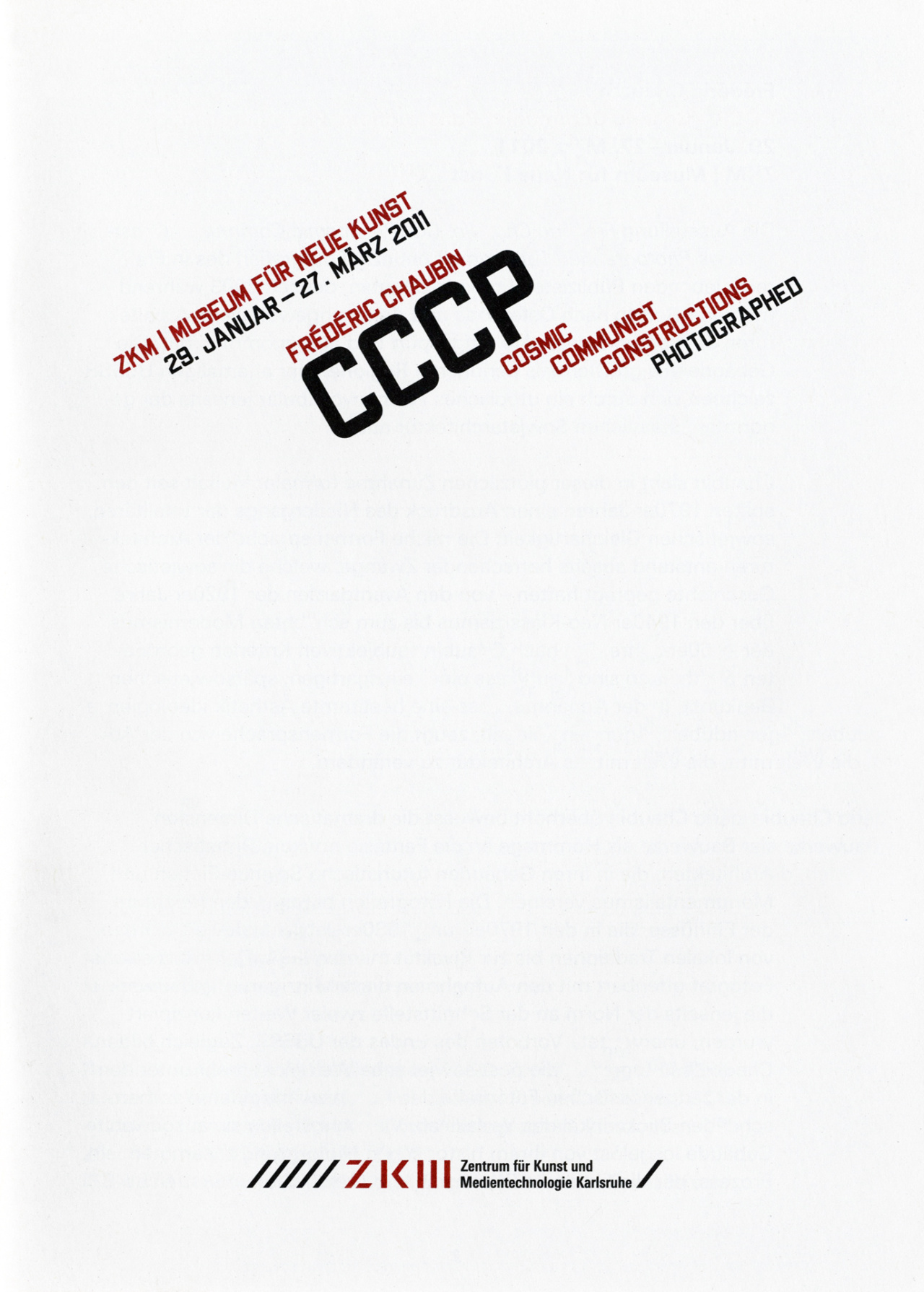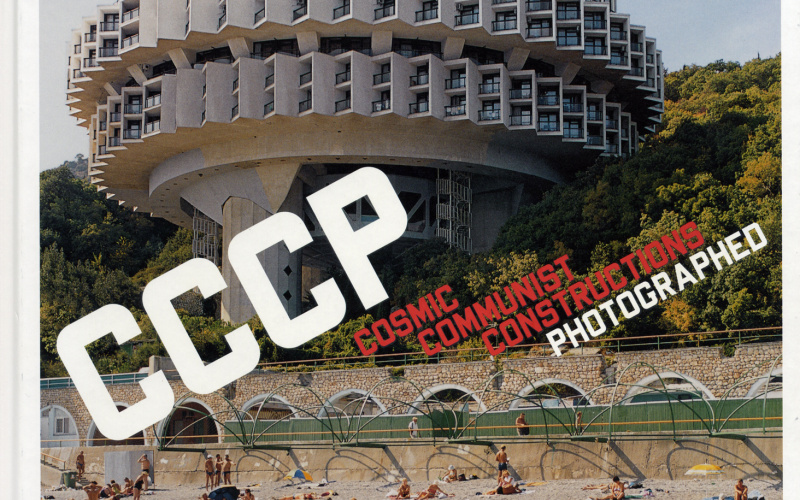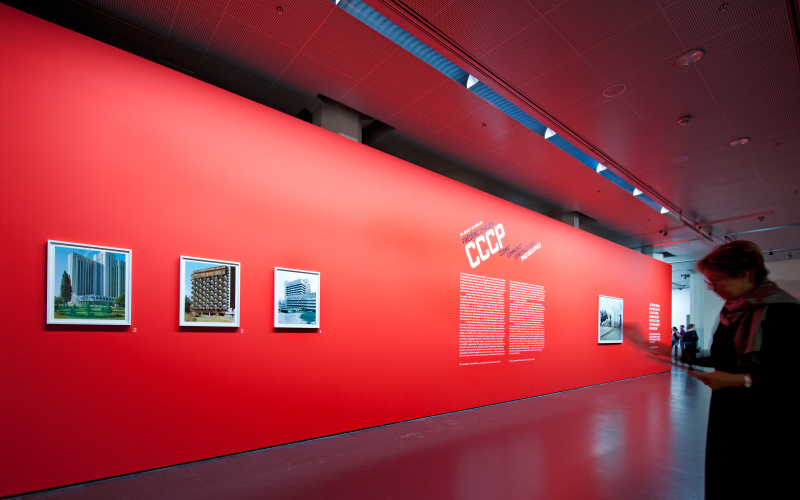- Exhibition brochure
Frédéric Chaubin. CCCP: Cosmic Communist Constructions Photographed
2011
- Type of publication
- Exhibition brochure
- Physical Description
- 23 p.
- Language
- German and English
- Year
- 2011
- Content
- The exhibition »Frédéric Chaubin. CCCP – Cosmic Communist Constructions Photographed« comprises a set of ninety photographs by French publicist Frédéric Chaubin. Over the course of several journeys to Eastern Europe and Asia since 2003, Frédéric Chaubin has been searching for and photographing atypical examples of architecture dating from the late Soviet era. Largely located in regions on the periphery of the former USSR, such buildings are defined by a utopian formal language uncharacteristic of the standard paradigms of Soviet state architecture. According to Chaubin, this sudden flourish in the diversity of shapes during the late 1970s is an expression of the demise in Soviet totalitarian homogeneity. This was a far cry from the prevalent constraints typical of Soviet history – from the vanguards of the 1920s, to 1940s neo-classicism and plain modernism of the 1960s. Assembling his visual subjects according to deliberately subjective approaches, the photographer rigorously maintains the hypothesis of a unique late Soviet style. Based on the notion that a given aesthetics is reflective of a set of ideological assumptions, this language was intent on transforming the world through architecture. Frédéric Chaubin’s deliberate enhancement of the dramatic dimension to these buildings pays homage to the imagination of those non-conformist architects whose structures unite futuristic science fiction and monumentalism. In addition the photographs emphasize the wealth of influence that was cultivated during the period, from local historical legacies to rivalry with the USA. In showing these unique structures, designed at the threshold of two worlds existing beyond the norm, the photographer reveals unexpected signs of the collapse of the Soviet Union. However, in contrast to the prevailing trend in photographic work over the past twenty years, Chaubin’s work is not premised on the documentation of a post-Soviet world in decay, but rather unites those selected buildings in a distinctive visual system that exploits the historical void: a process which underscores the fictional dimension of history.


